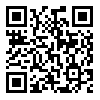Volume 1, Issue 3 (10-2009)
jorar 2009, 1(3): 0-0 |
Back to browse issues page
Download citation:
BibTeX | RIS | EndNote | Medlars | ProCite | Reference Manager | RefWorks
Send citation to:



BibTeX | RIS | EndNote | Medlars | ProCite | Reference Manager | RefWorks
Send citation to:
Barati Sedeh F. Study of the Relief Burnout in Some Active Relief Workers Comparing with Inactive Ones in Bam Earthquake. jorar 2009; 1 (3)
URL: http://jorar.ir/article-1-38-en.html
URL: http://jorar.ir/article-1-38-en.html
PhD in psychology, welfare organization, Tehran, Iran
Abstract: (4254 Views)
INTRODUCTION: Disaster relief workers may experience mental symptoms such as irritability, fatigue, serious reduction of job abilities, reduction of adaptive capabilities, coping and possibly job burnout in disaster situations. This study was conducted in order to investigate job burnout of a group of disaster relief workers who provided rescue and relief in the Bam earthquake.
METHOD: In this cross-sectional study, using the burnout questionnaire in disaster relief workers, the amount and type of symptoms in a group of active relief workers were compared and investigated with another group of relief workers who could not participate in the rescue and relief operation in Bam for various reasons.
FINDINGS: According to the findings, there was a significant correlation at the level of 0.05 between the burnout score of the people who provided services in Bam and the duration of their presence. The mean scores of the symptoms of the group present in BAM operation was 16.23 and the scores of the control group were 10.2. Also, T-test for comparing two means was equal to 3.78, which at the level of 0.001 indicates a higher level of symptoms in paramedics providing services in Bam.
CONCLUSION: Therefore, in order to support the relief workers and reduce these pressures and tensions and prevent them from turning into more severe psychological problems, it is necessary to provide special psychological support services to the relief workers and make interventions.
METHOD: In this cross-sectional study, using the burnout questionnaire in disaster relief workers, the amount and type of symptoms in a group of active relief workers were compared and investigated with another group of relief workers who could not participate in the rescue and relief operation in Bam for various reasons.
FINDINGS: According to the findings, there was a significant correlation at the level of 0.05 between the burnout score of the people who provided services in Bam and the duration of their presence. The mean scores of the symptoms of the group present in BAM operation was 16.23 and the scores of the control group were 10.2. Also, T-test for comparing two means was equal to 3.78, which at the level of 0.001 indicates a higher level of symptoms in paramedics providing services in Bam.
CONCLUSION: Therefore, in order to support the relief workers and reduce these pressures and tensions and prevent them from turning into more severe psychological problems, it is necessary to provide special psychological support services to the relief workers and make interventions.
Article Type: Research article |
Subject:
Psychological support in disasters
| Rights and permissions | |
 |
This work is licensed under a Creative Commons Attribution-NonCommercial 4.0 International License. |





